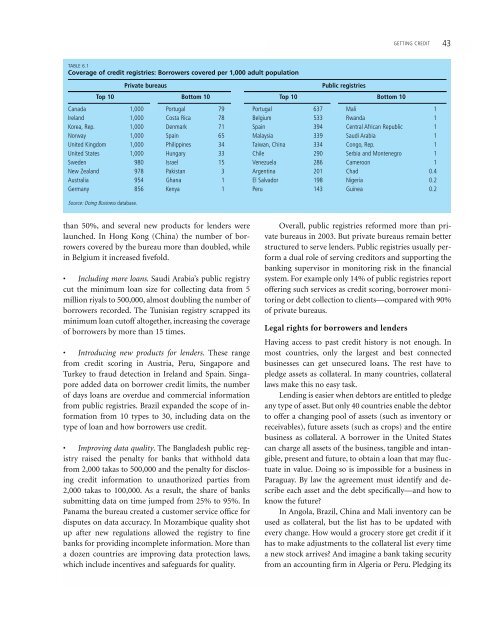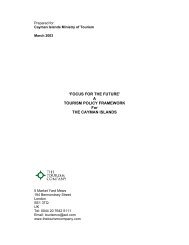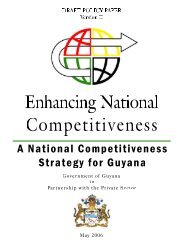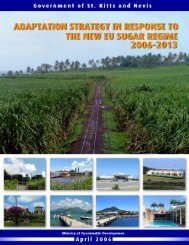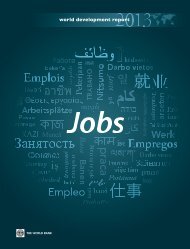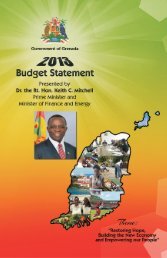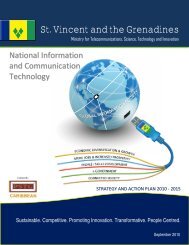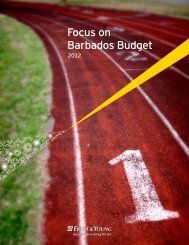Business Removing
Doing Business in 2005 -- Removing Obstacles to Growth
Doing Business in 2005 -- Removing Obstacles to Growth
- No tags were found...
You also want an ePaper? Increase the reach of your titles
YUMPU automatically turns print PDFs into web optimized ePapers that Google loves.
GETTING CREDIT 43<br />
TABLE 6.1<br />
Coverage of credit registries: Borrowers covered per 1,000 adult population<br />
Private bureaus<br />
Public registries<br />
Top 10 Bottom 10 Top 10 Bottom 10<br />
Canada 1,000 Portugal 79 Portugal 637 Mali 1<br />
Ireland 1,000 Costa Rica 78 Belgium 533 Rwanda 1<br />
Korea, Rep. 1,000 Denmark 71 Spain 394 Central African Republic 1<br />
Norway 1,000 Spain 65 Malaysia 339 Saudi Arabia 1<br />
United Kingdom 1,000 Philippines 34 Taiwan, China 334 Congo, Rep. 1<br />
United States 1,000 Hungary 33 Chile 290 Serbia and Montenegro 1<br />
Sweden 980 Israel 15 Venezuela 286 Cameroon 1<br />
New Zealand 978 Pakistan 3 Argentina 201 Chad 0.4<br />
Australia 954 Ghana 1 El Salvador 198 Nigeria 0.2<br />
Germany 856 Kenya 1 Peru 143 Guinea 0.2<br />
Source: Doing <strong>Business</strong> database.<br />
than 50%, and several new products for lenders were<br />
launched. In Hong Kong (China) the number of borrowers<br />
covered by the bureau more than doubled, while<br />
in Belgium it increased fivefold.<br />
• Including more loans. Saudi Arabia’s public registry<br />
cut the minimum loan size for collecting data from 5<br />
million riyals to 500,000, almost doubling the number of<br />
borrowers recorded. The Tunisian registry scrapped its<br />
minimum loan cutoff altogether, increasing the coverage<br />
of borrowers by more than 15 times.<br />
• Introducing new products for lenders. These range<br />
from credit scoring in Austria, Peru, Singapore and<br />
Turkey to fraud detection in Ireland and Spain. Singapore<br />
added data on borrower credit limits, the number<br />
of days loans are overdue and commercial information<br />
from public registries. Brazil expanded the scope of information<br />
from 10 types to 30, including data on the<br />
type of loan and how borrowers use credit.<br />
• Improving data quality. The Bangladesh public registry<br />
raised the penalty for banks that withhold data<br />
from 2,000 takas to 500,000 and the penalty for disclosing<br />
credit information to unauthorized parties from<br />
2,000 takas to 100,000. As a result, the share of banks<br />
submitting data on time jumped from 25% to 95%. In<br />
Panama the bureau created a customer service office for<br />
disputes on data accuracy. In Mozambique quality shot<br />
up after new regulations allowed the registry to fine<br />
banks for providing incomplete information. More than<br />
a dozen countries are improving data protection laws,<br />
which include incentives and safeguards for quality.<br />
Overall, public registries reformed more than private<br />
bureaus in 2003. But private bureaus remain better<br />
structured to serve lenders. Public registries usually perform<br />
a dual role of serving creditors and supporting the<br />
banking supervisor in monitoring risk in the financial<br />
system. For example only 14% of public registries report<br />
offering such services as credit scoring, borrower monitoring<br />
or debt collection to clients—compared with 90%<br />
of private bureaus.<br />
Legal rights for borrowers and lenders<br />
Having access to past credit history is not enough. In<br />
most countries, only the largest and best connected<br />
businesses can get unsecured loans. The rest have to<br />
pledge assets as collateral. In many countries, collateral<br />
laws make this no easy task.<br />
Lending is easier when debtors are entitled to pledge<br />
any type of asset. But only 40 countries enable the debtor<br />
to offer a changing pool of assets (such as inventory or<br />
receivables), future assets (such as crops) and the entire<br />
business as collateral. A borrower in the United States<br />
can charge all assets of the business, tangible and intangible,<br />
present and future, to obtain a loan that may fluctuate<br />
in value. Doing so is impossible for a business in<br />
Paraguay. By law the agreement must identify and describe<br />
each asset and the debt specifically—and how to<br />
know the future?<br />
In Angola, Brazil, China and Mali inventory can be<br />
used as collateral, but the list has to be updated with<br />
every change. How would a grocery store get credit if it<br />
has to make adjustments to the collateral list every time<br />
a new stock arrives? And imagine a bank taking security<br />
from an accounting firm in Algeria or Peru. Pledging its


